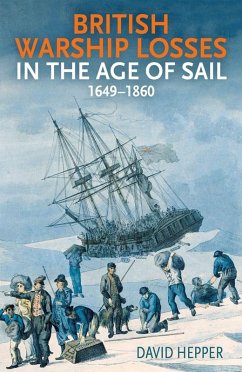This significant new reference book provides a complete list of the ships of the Royal Navy which were lost at sea in the age of sail. Arranged in chronological order, it includes outline details of each vessel lost and the circumstances of her loss. 1649 is the start date, which coincides with the execution of Charles I and that time when the Royal Navy entered a new phase as an instrument of state: the launch of the steam-powered and iron-hulled Warrior in 1860 effectively marks the end of the great era of the wooden-hulled sailing warship.Life at sea in the age of sail was a hazardous pursuit, and there were many reasons for a ship being lost. A correspondent to the Nautical Magazine in 1841 detailed some fifty reasons and causes, from being short of crew, abandonment without sufficient cause, the poor condition of a ship, incorrectness of charts, poor dead-reckoning as well as less obvious reasons such as 'the presence of captains' wives and other women.' Navigational error, particularly before the chronometer allowed for the accurate calculation of longitude, was a common reason, while poor weather in the form of fog or gales was an obvious peril. So many ships suffered the melancholy fate of lonely disappearance - overwhelmed by storm and sea, and witnessed by none. Collisions and fire feature regularly as does, of course, loss to the enemy.Each entry includes details of the ship, its name and type, tonnage and dimensions, origin and place of build, the circumstances of the loss, the date and a list of the main references used. All this material is presented here in a single and highly accessible volume, and represents a major milestone both in naval research and publishing; it offers too a fund of fascinating and compelling stories of maritime misadventure.Praise for the author's previous work:'This volume is an amazing encyclopaedic, catalogue of British warships lost between 1920 and 1982 … It is strongly recommended to historians, authors, researchers and all those with an interest in the history of the Royal Navy and the Second World War.' -Scuttlebut Magazine
Dieser Download kann aus rechtlichen Gründen nur mit Rechnungsadresse in A, B, BG, CY, CZ, D, DK, EW, E, FIN, F, GR, HR, H, IRL, I, LT, L, LR, M, NL, PL, P, R, S, SLO, SK ausgeliefert werden.









